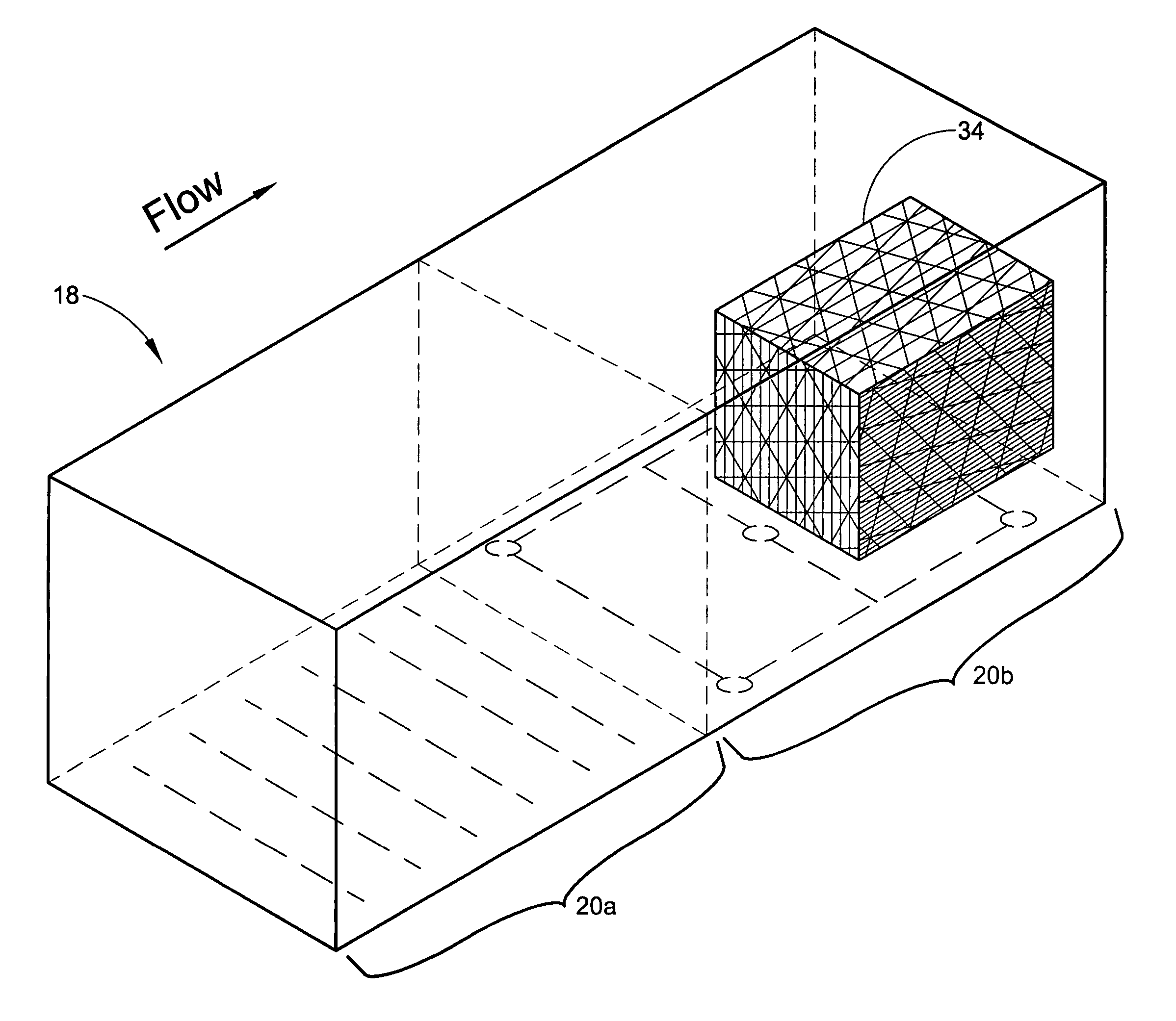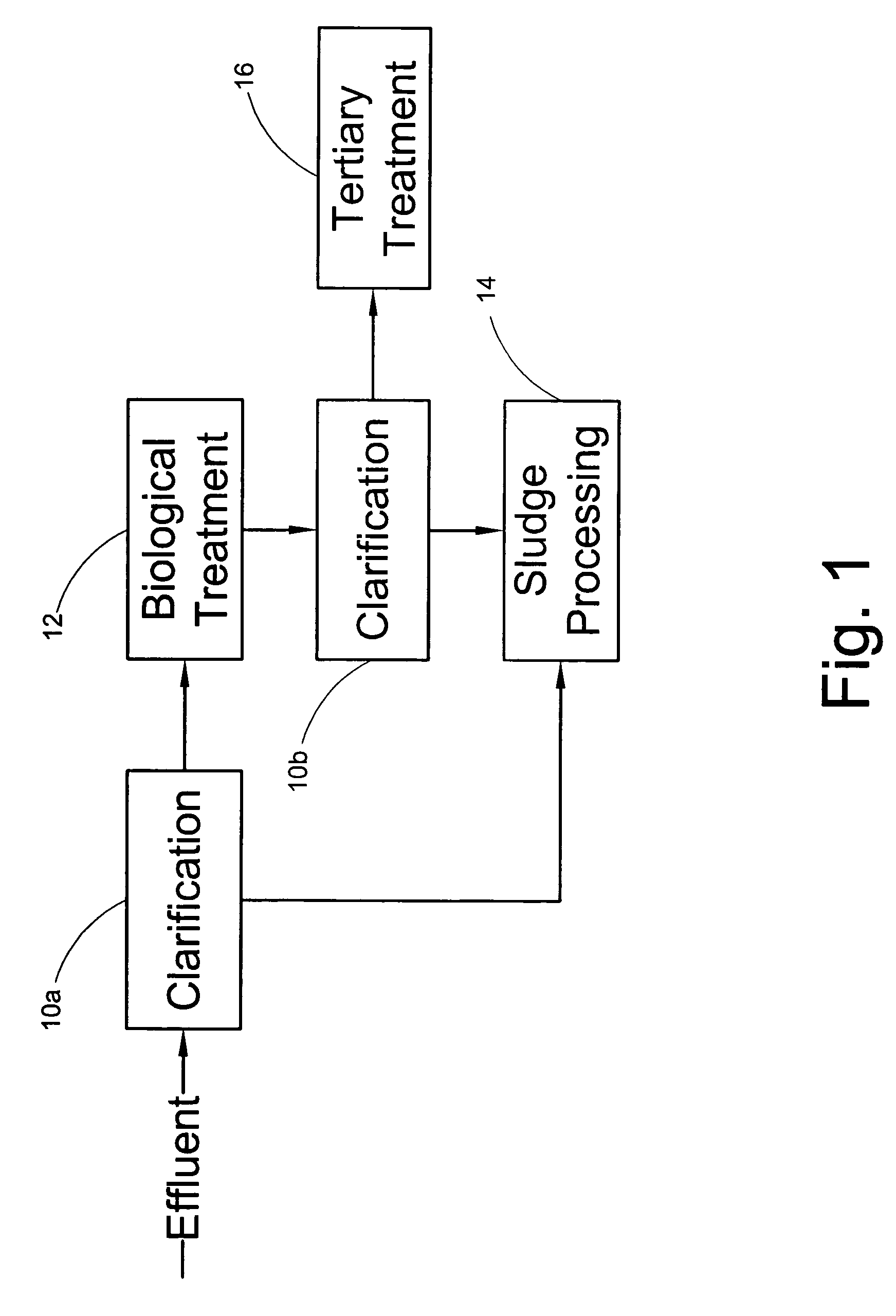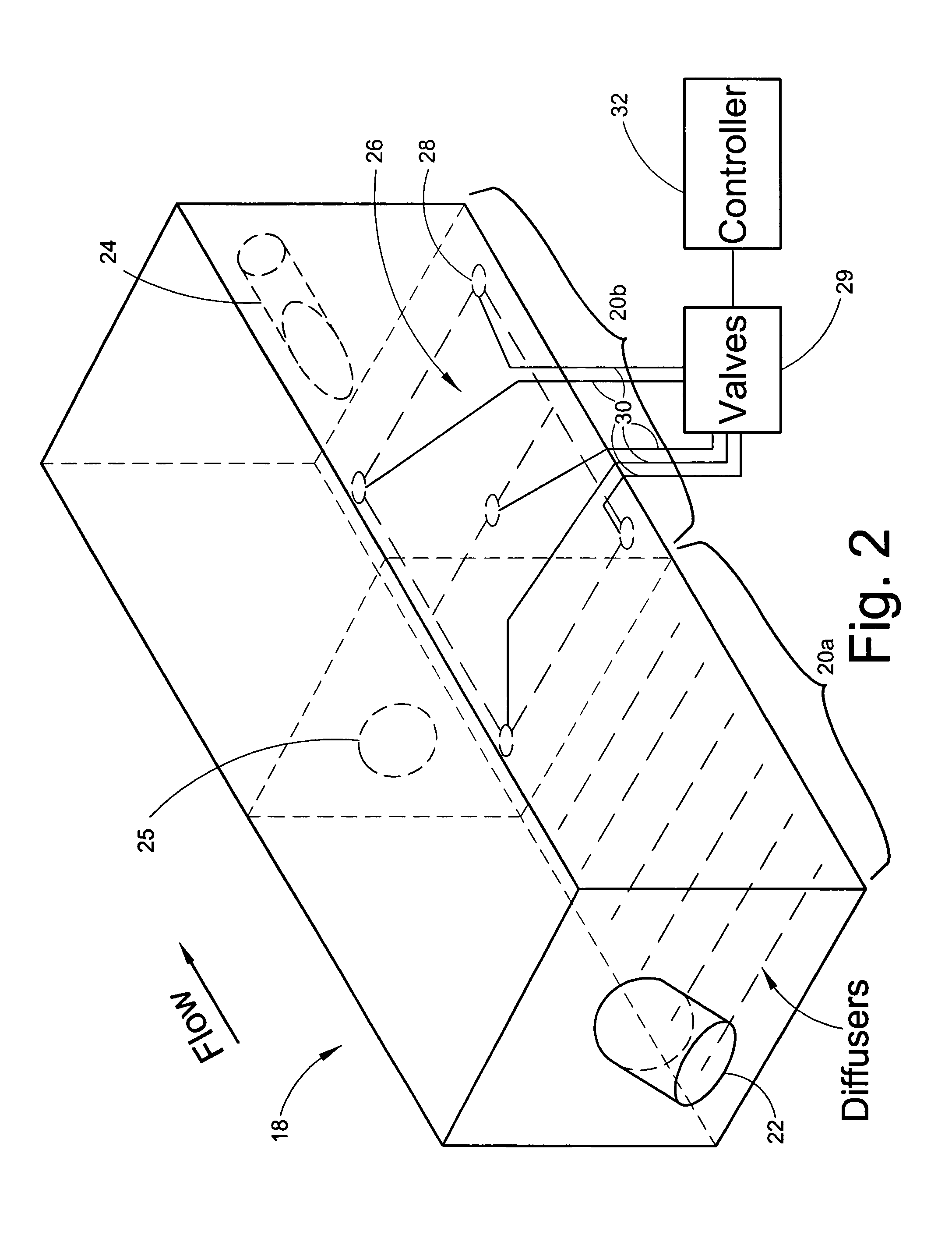Mixer for use with media in wastewater treatment
a technology of wastewater treatment and media, which is applied in the direction of multi-stage water/sewage treatment, filtration separation, separation processes, etc., can solve the problems of slowing down the progress of wastewater treatment, the amount of tiny bubbles that must be supplied to provide adequate mixing will greatly exceed the quantity of tiny bubbles required for sufficient oxygenation, and the effect of enhancing the efficiency of wastewater conversion
- Summary
- Abstract
- Description
- Claims
- Application Information
AI Technical Summary
Benefits of technology
Problems solved by technology
Method used
Image
Examples
Embodiment Construction
[0023]FIG. 1 is a schematic diagram of a wastewater treatment process that includes a primary treatment process, a secondary treatment process and a tertiary treatment process. The primary treatment process includes a clarification stage 10a to separate dense portions of the wastewater, typically heavy solids, from less dense portions of the wastewater, typically light solids and liquid. The secondary treatment process includes a biological nutrient conversion stage 12 that converts the biological nutrient material contained in the light solids and liquid into a more environmentally friendly form. For example, in one embodiment, wastewater is first clarified into heavy solids, light solids and supernatant liquid in the clarification stage 10a using conventional techniques. The heavy solids are directed to a sludge processing stage 14 that processes the heavy solids using conventional techniques. The light solids and liquid are directed to the biological nutrient conversion stage 12 ...
PUM
| Property | Measurement | Unit |
|---|---|---|
| diameter | aaaaa | aaaaa |
| diameter | aaaaa | aaaaa |
| size | aaaaa | aaaaa |
Abstract
Description
Claims
Application Information
 Login to View More
Login to View More - R&D
- Intellectual Property
- Life Sciences
- Materials
- Tech Scout
- Unparalleled Data Quality
- Higher Quality Content
- 60% Fewer Hallucinations
Browse by: Latest US Patents, China's latest patents, Technical Efficacy Thesaurus, Application Domain, Technology Topic, Popular Technical Reports.
© 2025 PatSnap. All rights reserved.Legal|Privacy policy|Modern Slavery Act Transparency Statement|Sitemap|About US| Contact US: help@patsnap.com



